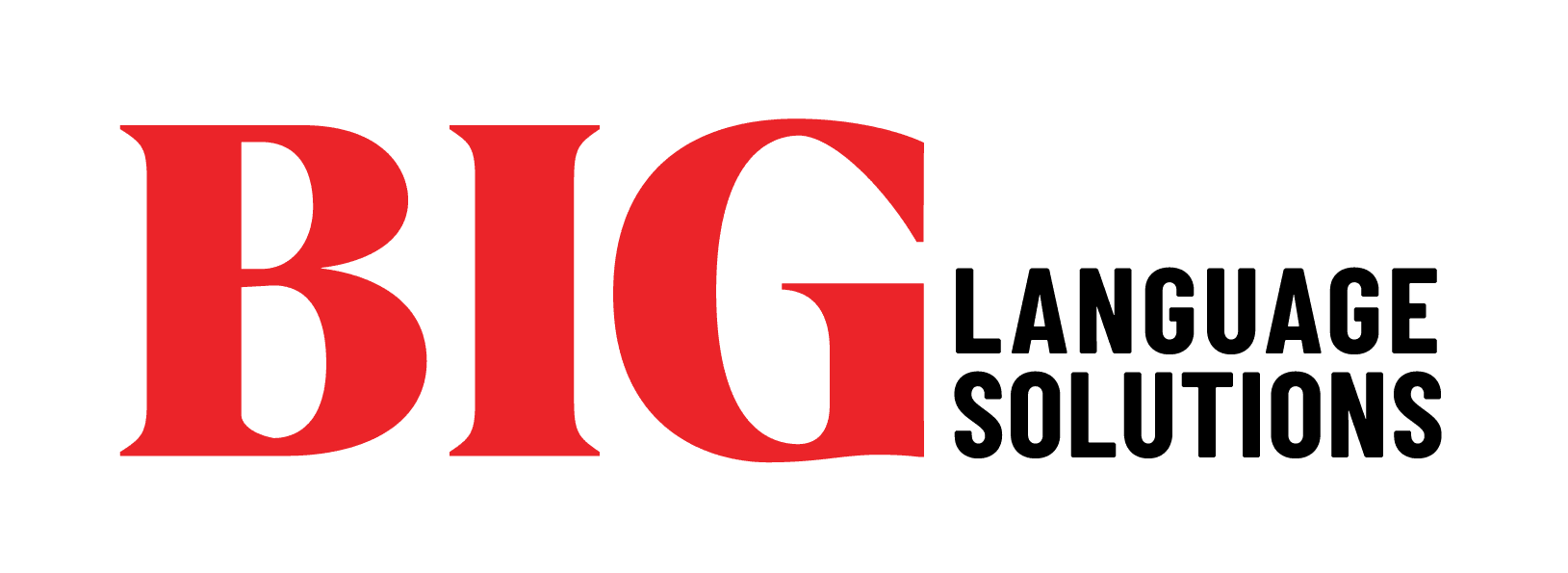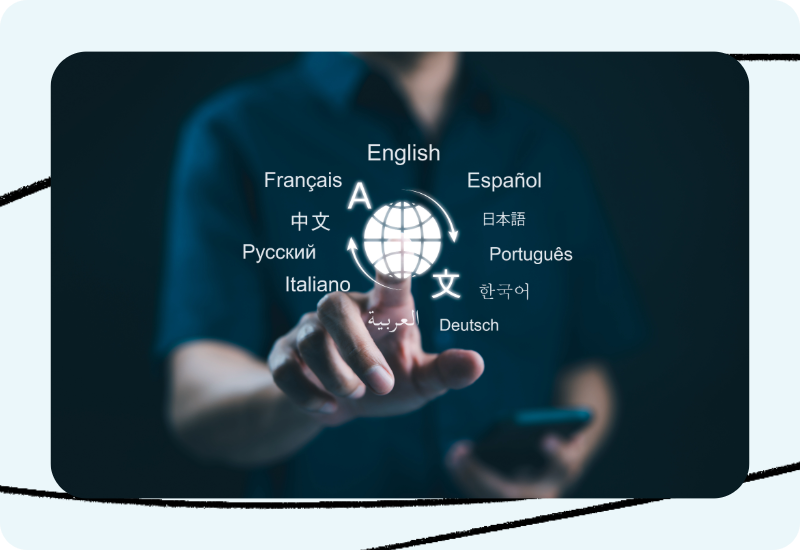As organizations expand into more markets, they’re under pressure to translate more content faster and more cost-effectively than ever before. From product documentation to compliance materials, the volume of multilingual content is exploding. That’s why more and more teams are turning to machine translation (MT) to keep up.
But with so many tools, techniques, and trade-offs, MT also raises a lot of questions. How do you balance speed with quality? Can you trust it with sensitive data? And what’s the difference between all these emerging AI technologies?
To help you understand the landscape, we’ve written out the answers to the top questions our customers have about machine translation. You can consider it your guide to choosing the right technology, protecting your data, and getting fast, high-quality translations with the help of our expert team.
What is Neural Machine Translation (NMT)?
Neural Machine Translation (NMT) is considered the most advanced and accurate approach to machine translation today. NMT leverages deep learning, which involves training artificial neural networks, inspired by the structure of the human brain, to predict the likelihood of a sequence of words. NMT focuses on translating entire sentences at a time, capturing context and producing more natural and accurate translations.
Is all machine translation the same?
Not at all. There are several types of machine translation (MT), each with its own strengths and weaknesses:
● Rules-Based MT (RBMT): Based on linguistic rules. It was foundational but is rarely used today.
● Statistical MT (SMT): Uses statistical models to generate translations. Also, mostly phased out.
● Neural MT (NMT): As we mentioned, NMT is today’s industry standard. It predicts word sequences based on deep learning and context, producing fluent, adaptable translations.
● Large Language Models (LLMs): These include tools like ChatGPT or Gemini. They’re designed to generate human-like language, but they aren’t built for precise translation. They can be unpredictable and harder to control in regulated industries. And security can be a problem: they store and process massive datasets, making them prime targets for data breaches.
At BIG, we leverage our own custom-trained NMT engines. Based on our extensive research, we believe they deliver the best combination of speed, quality, and consistency for specialized translation needs.
When should I use machine translation?
Machine translation is a great choice when you have:
● High volumes of content
● Tight deadlines
● Repetitive, structured documents (like member communications or safety reports)
● The time and budget to involve expert human reviewers (for specialized content like medical or legal)
● Clear expectations around quality, risk, and use
Our team helps you evaluate whether MT, human translation, or a hybrid approach is the best option for your goals, timeline, and budget.
What are the top benefits of MT?
Machine translation offers speed, scalability, cost efficiency, and quality—especially when paired with expert human post-editing. It helps our clients translate more content, faster, without compromising consistency or compliance. For high-volume, structured content, MT can cut timelines dramatically while still meeting quality benchmarks.
What are the top problems with MT?
MT alone can struggle with nuance, tone, and domain-specific terminology, especially in regulated industries. Without clean training data and expert review, it may introduce errors or inconsistencies. That’s why quality control and human oversight are built into every MT workflow we deliver.
What languages are best for MT?
MT performs best with “high-resource languages” like English, Spanish, French, German, and Chinese, where large volumes of training data exist. It’s harder to achieve quality and fluency
with “low resource” languages like Tagalog that, you guessed it, have less material for engine training.
What content types work best for MT?
Structured, repetitive, and straightforward content like user guides, product descriptions, SOPs, and knowledge base articles are ideal for MT. User generated content like reviews or social media content is also a good choice for MT because it is non-critical content and/or has a short shelf-life. With the right customization, even more complex formats like eLearning modules or regulatory documentation can be handled efficiently, especially with expert post-editing in place.
But when it comes to more creative work—think taglines, campaign messaging, marketing materials, or emotionally rich storytelling—MT just doesn’t cut it. These types of content rely on subtlety, brand voice, and cultural context that machines aren’t equipped to handle. You need a human who can read between the lines, understand intent, and shape language in a way that truly connects with your audience.
How do we ensure quality in machine translation?
We have all seen examples of embarrassingly bad machine translations. This can happen with poorly trained engines or when content is complex and highly nuanced. So, if you’re using MT, you may need some form of quality control.
First, the quality of any machine translation engine depends on the data it learns from. (That’s why at BIG we invest heavily in data cleaning and quality assurance before the engine sees a document.)
The second element of quality in the MT process is post-editing.
There are also some automated quality checks that can be performed on machine translated copy (often using AI).
At BIG we apply a multi-step quality control process:
1. We prepare (clean) the source content to ensure clarity and consistency.
2. We customize NMT engines. Currently we have over 450 engines!
3. QA tools scan for errors and formatting issues.
4. Our expert post-editors refine the translation for tone, terminology, and accuracy.
5. A final human review confirms the content meets client expectations.
6. We use that feedback to improve our translation memory and NMT engine.
Every layer makes sure the final translation is ready for real-world use, especially in high-stakes environments like life sciences.
What’s the role of post-editing (PE)?
Post-editing is the process in which linguists review “raw” translation and correct any inaccuracies or problems in fluency or style. We call this MTPE—(Neural) Machine Translation + Post Editing and it combines the speed of automation with the judgment and precision of a human expert.
Here’s why MTPE matters:
● You reach more markets with more content translated in less time than with a human-only translation process.
● User experience improves, since audiences get accurate, fluent content in their own language.
● You grow without overloading your teams or blowing your budget.
We offer different levels of post-editing depending on your needs, since not all content needs to be perfect.
Are LLMs the future of translation?
There’s a lot of buzz out there right now around translating using Large Language Models.
Large Language Models (LLMs) like ChatGPT, Gemini, and Claude are AI systems trained on massive datasets to generate human-like language. They’re designed to predict what comes next in a sentence. This makes them great at sounding fluent, but they are not always accurate.
Unlike NMT, LLMs aren’t built specifically for translation, which means they can miss context, introduce errors, or even “hallucinate” content.
LLMs are powerful tools, and we keep on top of the latest developments in the field. But, based on our research, they’re not ready to replace custom NMT for our work in life sciences or other regulated fields.
Here’s what we’ve seen: LLMs are great at sounding fluent, but they often struggle with precision. They may introduce errors, inconsistencies, or even invent facts (“hallucinations”)—and that’s a risk we can’t afford when translating clinical, medical, or other content for regulated industries.
That’s why we’re sticking with our custom NMT-first approach through at least 2025. It gives us the control and consistency our clients require. When LLMs catch up, we’ll be ready to adapt—but we’re not chasing the hype.
Is machine translation really free?
Not exactly. Building an effective MT workflow takes real investment.
● You need high-quality, domain-specific training data.
● You need people to clean that data.
● It takes time to train and test the engine.
● You need human post-editors to ensure the final translation meets your standards.
● And you need a secure, private infrastructure to protect your data.
Public tools like Google Translate might seem “free,” but they come with risks, and they don’t deliver the quality or control enterprises demand.
What’s the difference between public and private MT engines?
A big one, especially when it comes to data privacy.
● Public MT engines, like Google Translate or free versions of DeepL, send your content to external servers. That content may be stored, shared, or even used to train other models. You lose control.
● Private/custom engines, like the ones we build and host, keep your data secure. We strip out sensitive info, anonymize training data, and ensure compliance with industry regulations.
In fields like life sciences, where documents contain medical records, IP, and regulatory data, privacy isn’t optional. It’s why our clients trust us to keep their content protected at every step.
What about data security?
It’s non-negotiable. Our MT solutions are built on secure, private infrastructure designed to meet the highest standards for data protection. We anonymize sensitive information, strip out identifiable data, and ensure that nothing is stored or reused without your permission. Unlike public MT engines, your content stays fully under your control, protected at every step to support compliance, confidentiality, and peace of mind.
What makes our approach to MT different?
We’re not offering a generic solution. We design, build, and manage custom NMT systems for clients with complex content needs, especially in healthcare.
Here’s what sets us apart:
● Deep expertise in regulated industries
● End-to-end quality control, from data prep to delivery
● Secure infrastructure, with privacy built into every process
● Human-centered workflows, because MT isn’t a replacement—it’s a tool
● Continuous improvement, using real-world feedback to train better engines
● Continuous research into the latest technology and experimentation on where it can be applied practically and effectively
● Industry thought leadership and participation in conferences
This approach allows us to deliver confidently and consistently.
Ready to scale your translation program?
We hope this FAQ has been helpful for those of you considering machine translation or wondering if your current setup is working. If you’re just getting started, we can help. Our team will walk you through your options and build a plan that helps you move faster, reach more people, and stay fully compliant, without compromising on quality.
Chat with us here and get started.





